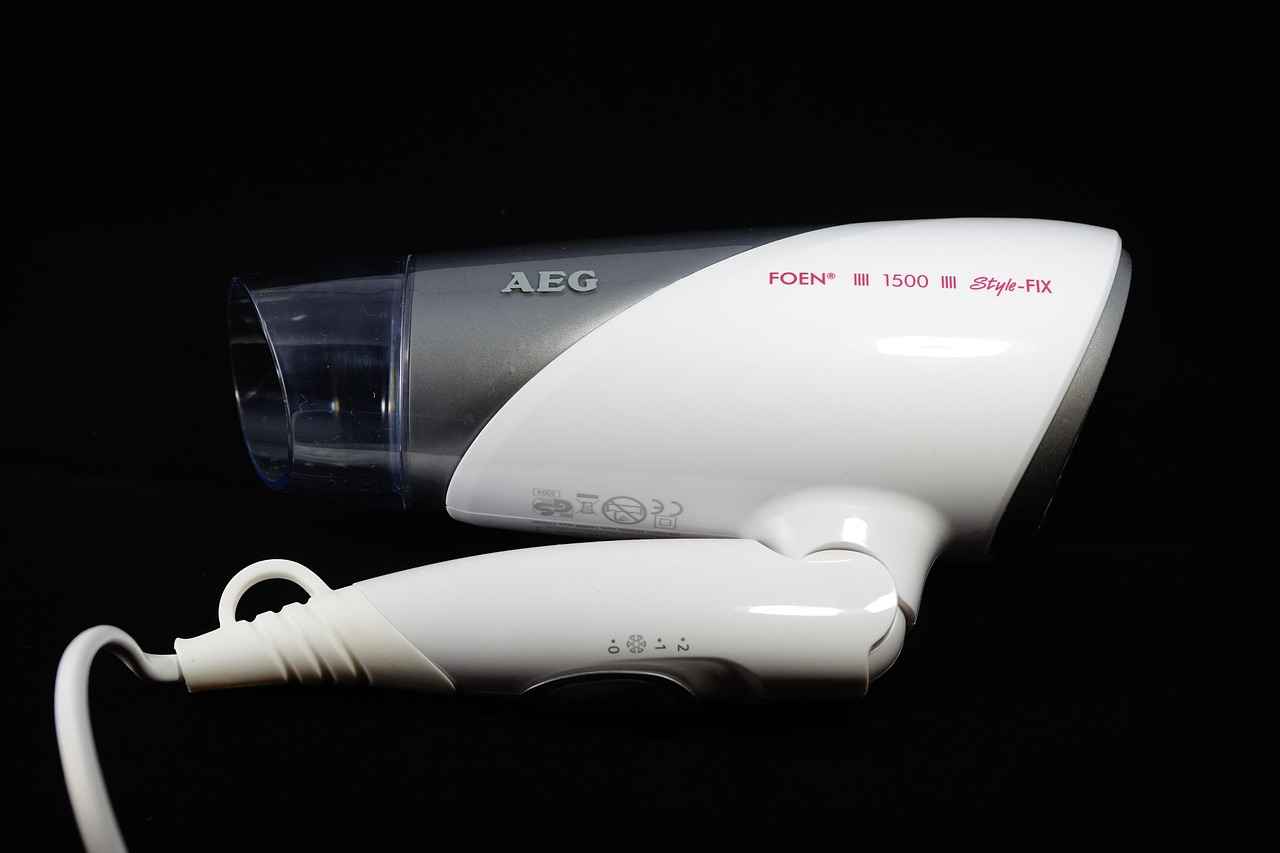This article will guide you through essential questions to consider when selecting a hair transplant clinic, ensuring you make an informed decision for your hair restoration journey. Choosing the right clinic is crucial, as it can significantly influence the outcome of your procedure and your overall satisfaction.
- What Are the Clinic’s Credentials?
It’s vital to verify the qualifications and certifications of both the clinic and its medical staff. Look for accredited institutions and board-certified surgeons who specialize in hair restoration. - What Techniques Do They Use?
Different hair transplant techniques, such as Follicular Unit Extraction (FUE) and Follicular Unit Transplantation (FUT), can yield varying results. Understanding these methods will help you choose the right approach for your hair restoration. - What Are the Costs Involved?
Understanding the financial aspects is essential. Ask about initial consultation fees, the cost of the procedure, and any potential long-term expenses related to follow-up treatments. - What Is the Clinic’s Reputation?
Research the clinic’s reputation by looking into patient testimonials and success rates. A reputable clinic will have positive reviews and a track record of successful procedures. - What Is the Aftercare Process?
Post-operative care is crucial for successful hair restoration. Inquire about the aftercare services the clinic provides, including follow-up appointments and patient support services. - Are There Any Risks or Side Effects?
Understanding potential risks and side effects is essential. Discuss common complications and how the clinic manages them to ensure patient safety. - What Is the Clinic’s Experience?
The experience level of the clinic and its staff can significantly impact results. Ask about the qualifications of the surgeon and the clinic’s years in operation. - What Are the Expected Results?
Having realistic expectations is crucial. Discuss potential results and timelines for hair growth, and review before and after photos to set accurate expectations. - How Personalized Is the Treatment Plan?
A personalized approach can enhance outcomes. Ask how the clinic tailors treatment plans to individual needs and hair loss patterns. - What Is the Clinic’s Hygiene and Safety Protocol?
Safety and hygiene are paramount. Inquire about sterilization practices and any COVID-19 protocols the clinic has implemented to protect patients.
Conclusion: Choosing the right hair transplant clinic is a significant decision. By asking these essential questions, you can ensure a safe, effective, and satisfactory hair restoration experience.

What Are the Clinic’s Credentials?
Understanding the qualifications and certifications of a hair transplant clinic is essential for ensuring the safety and effectiveness of your treatment. In this section, we will delve into the importance of verifying the credentials of both the clinic and its medical staff.
When considering a hair transplant clinic, you should ask the following questions:
- What certifications does the clinic hold? Look for clinics accredited by recognized organizations, as this indicates adherence to industry standards.
- Are the medical staff qualified? Verify that the surgeons and technicians have the necessary qualifications, including board certifications in dermatology or plastic surgery.
- What is the clinic’s experience? Inquire about the number of procedures performed and the experience level of the medical team. A well-established clinic with a proven track record is often a safer choice.
Additionally, consider the following aspects:
| Credential Type | Importance |
|---|---|
| Accreditation | Ensures the clinic meets safety and quality standards. |
| Board Certification | Indicates specialized training and expertise in hair restoration. |
| Membership in Professional Organizations | Shows commitment to ongoing education and adherence to ethical practices. |
Verifying the credentials of a hair transplant clinic and its staff is not just a precaution; it is a vital step in safeguarding your health and ensuring satisfactory results. By conducting thorough research and asking the right questions, you can make an informed decision that aligns with your needs and expectations.

What Techniques Do They Use?
When considering a hair transplant, it is essential to understand that different techniques can lead to varied outcomes. The two most prevalent methods are Follicular Unit Extraction (FUE) and Follicular Unit Transplantation (FUT). Each technique has its unique approach, benefits, and drawbacks that can significantly impact your hair restoration journey.
Follicular Unit Extraction (FUE)
FUE is a minimally invasive procedure that involves extracting individual hair follicles from the donor area and implanting them into the balding areas. This technique is favored for its natural-looking results and minimal scarring.
- Advantages of FUE:
- Less visible scarring due to small punch incisions.
- Quicker recovery time, allowing patients to resume normal activities sooner.
- Suitable for patients with a tighter scalp.
- Disadvantages of FUE:
- Generally higher cost compared to FUT.
- May require more time in the operating room for larger sessions.
Follicular Unit Transplantation (FUT)
FUT, also known as the strip method, involves removing a strip of scalp from the donor area, which is then dissected into individual follicular units for transplantation. This method can be more efficient for larger areas of hair loss.
- Advantages of FUT:
- Typically lower cost compared to FUE.
- Allows for a larger number of grafts to be transplanted in one session.
- Disadvantages of FUT:
- Visible linear scar in the donor area.
- Longer recovery period compared to FUE.
In conclusion, choosing between FUE and FUT depends on various factors including your hair loss pattern, budget, and personal preferences. It is crucial to consult with a qualified specialist who can guide you through the decision-making process and help you achieve the best possible results for your hair restoration.
Follicular Unit Extraction (FUE)
is a cutting-edge, minimally invasive hair restoration technique that has gained significant popularity in recent years. This method is designed to address hair loss by extracting individual hair follicles from a donor area and transplanting them to areas experiencing thinning or balding. In this section, we will explore the mechanics of FUE and discuss why it could be the ideal solution for individuals seeking to restore their hair.
The FUE technique begins with the identification of a suitable donor site, typically located at the back of the head where hair is more resistant to balding. Using a specialized tool, the surgeon carefully extracts individual follicular units. This precision minimizes damage to the follicles, promoting higher survival rates post-transplant. Once harvested, these follicles are meticulously prepared and implanted into the recipient area, ensuring a natural look and feel.
One of the most compelling reasons to consider FUE is its minimally invasive nature. Unlike traditional methods such as Follicular Unit Transplantation (FUT), FUE does not require a large incision or stitches, resulting in less discomfort and a quicker recovery time. Patients often appreciate the lack of visible scarring, as the tiny extraction sites typically heal within a few days.
Moreover, FUE offers flexibility in terms of donor site selection, allowing for a more tailored approach to hair restoration. This adaptability is particularly beneficial for individuals with varying hair types and patterns of hair loss. Additionally, the technique can be performed in multiple sessions, enabling patients to gradually achieve their desired density without overwhelming their scalp.
In conclusion, FUE is a revolutionary technique that not only enhances the aesthetic outcome of hair restoration but also prioritizes patient comfort and recovery. If you’re considering a hair transplant, FUE may be the right choice for you, given its numerous advantages and the potential for natural-looking results.
Advantages of FUE
Follicular Unit Extraction (FUE) has gained significant popularity in the field of hair restoration due to its numerous advantages. This minimally invasive technique not only enhances aesthetic outcomes but also contributes to a more comfortable recovery experience for patients.
One of the primary benefits of FUE is its quicker recovery time. Unlike traditional methods, such as Follicular Unit Transplantation (FUT), which may require longer healing periods due to the linear incision made on the scalp, FUE utilizes small, circular punches to extract hair follicles. This results in minimal trauma to the scalp, allowing patients to return to their daily activities much sooner.
Additionally, FUE significantly reduces the visibility of scarring. The small extraction sites heal quickly and generally become less noticeable over time, making it an appealing option for individuals who prefer to wear their hair short or have concerns about visible scars. This aspect of FUE is particularly important for patients who prioritize aesthetics in their hair restoration journey.
Moreover, FUE is highly versatile and can be performed on various hair types and patterns of hair loss. Whether a patient is experiencing thinning hair or more advanced stages of baldness, FUE can be tailored to meet individual needs. This flexibility contributes to its growing popularity among diverse patient demographics.
Patients also appreciate the less invasive nature of FUE, which typically results in less discomfort during and after the procedure. The absence of a large incision means that there is less postoperative pain, and many patients report a more pleasant overall experience.
In summary, the advantages of FUE—including quicker recovery times, reduced scarring, versatility, and lower levels of discomfort—make it a favored choice among those seeking effective hair restoration solutions. As patients continue to seek out the best options for their hair loss concerns, FUE stands out as a leading technique in the field.
Disadvantages of FUE
While Follicular Unit Extraction (FUE) is widely regarded as a minimally invasive and effective hair restoration technique, it is important to recognize that it may not be suitable for everyone. Understanding the potential drawbacks and considerations is crucial before making a decision.
- Limited Donor Hair Availability: FUE relies on extracting individual hair follicles, which can be limiting if the donor area has insufficient hair density. Patients with advanced hair loss may find that they do not have enough viable follicles for a successful procedure.
- Higher Cost: Compared to other techniques like Follicular Unit Transplantation (FUT), FUE can be more expensive. The meticulous nature of this technique often results in higher labor costs, which may not fit every budget.
- Longer Procedure Time: The FUE process can take significantly longer than FUT, especially for larger areas requiring transplantation. Patients should be prepared for extended time in the clinic, which can be inconvenient.
- Risk of Follicle Damage: There is a possibility of damaging the hair follicles during extraction, which can affect the overall success rate of the transplant. Proper technique and experience of the surgeon are critical to minimize this risk.
- Post-Operative Care: FUE may require more intensive post-operative care, including follow-up visits to ensure proper healing and growth. Patients must be willing to commit to this aspect of the recovery process.
- Possible Uneven Growth: In some cases, patients may experience uneven hair growth due to the random nature of follicle extraction. This can lead to a patchy appearance if not managed properly.
In conclusion, while FUE offers many advantages, it is essential to weigh these disadvantages against personal circumstances and expectations. Consulting with a qualified hair transplant specialist can help determine if FUE is the right choice for your specific needs.
Follicular Unit Transplantation (FUT)
is a widely recognized method for hair restoration that has been utilized for many years. This technique involves the surgical removal of a strip of scalp from a donor area, typically at the back of the head, where hair is more resistant to balding. The strip is then dissected into individual follicular units, which are subsequently transplanted into the thinning or balding areas of the scalp.
The FUT process begins with a consultation where the surgeon evaluates the patient’s hair loss pattern and overall health. Once the patient is deemed suitable for the procedure, the area is numbed using local anesthesia. The surgeon carefully removes a strip of scalp, which is then closed with sutures. After this, the strip is divided into smaller grafts that contain one to four hair follicles each.
Suitability for Different Hair Loss Patterns
- Androgenetic Alopecia: FUT is particularly effective for individuals experiencing male or female pattern baldness.
- Scarring Alopecia: Patients with scarring conditions may also benefit from FUT, as it can help restore hair in affected areas.
- Extensive Hair Loss: Those with significant hair loss can achieve greater coverage with the larger number of grafts typically obtained from a single FUT session.
One of the primary advantages of FUT is that it allows for the transplantation of a greater number of grafts in a single session compared to other methods like FUE (Follicular Unit Extraction). However, it is important to note that FUT may leave a linear scar at the donor site, which can be a concern for some patients, especially those who prefer very short hairstyles.
In conclusion, FUT remains a viable option for many individuals facing hair loss. Its effectiveness, combined with the ability to harvest a significant number of grafts, makes it a popular choice among those seeking to restore their hair. As with any medical procedure, it is essential to consult with a qualified surgeon to determine the best approach for your specific needs.

What Are the Costs Involved?
Understanding the financial aspects of hair transplants is essential for anyone considering this life-changing procedure. The costs associated with hair transplants can vary significantly based on several factors, including the technique used, the clinic’s location, and the surgeon’s expertise. In this section, we will break down the various costs involved and the factors that influence them.
The overall cost of a hair transplant can be categorized into several components:
- Initial Consultation Fees: Most clinics charge for the initial consultation, which can range from $50 to $200. This fee often includes a detailed assessment of your hair loss and a discussion of potential treatment options.
- Procedure Costs: The primary cost of the hair transplant itself can vary widely. On average, patients can expect to pay between $4,000 and $15,000 depending on the method used:
- Follicular Unit Extraction (FUE): This technique typically costs more due to its complexity, averaging between $7,000 and $15,000.
- Follicular Unit Transplantation (FUT): Generally less expensive, FUT costs range from $4,000 to $10,000.
- Medications and Aftercare: Post-operative medications and aftercare can add another $500 to $1,500 to your total cost. These may include pain management medications and topical treatments.
Several factors can affect the overall cost of a hair transplant:
- Geographic Location: Clinics in urban areas may charge higher fees compared to those in rural locations.
- Surgeon’s Experience: Highly experienced surgeons may command higher prices due to their expertise and successful track record.
- Clinic Reputation: Well-established clinics with a strong reputation for quality care may charge more for their services.
Beyond the initial costs, it is essential to consider potential long-term expenses associated with hair transplants:
- Maintenance Treatments: Some patients may require follow-up treatments to maintain their results, which can add to the overall financial commitment.
- Future Hair Loss: If hair loss continues, additional procedures may be needed in the future, impacting your budget further.
In conclusion, understanding the costs involved in hair transplants is crucial for making an informed decision. By considering the various factors that influence pricing and planning for potential long-term expenses, you can better prepare for your hair restoration journey.
Initial Consultation Fees
When considering a hair transplant, understanding the is a crucial step in the decision-making process. Many clinics charge for the first consultation, which can vary significantly in price. This fee often reflects the expertise of the medical staff, the quality of the facilities, and the comprehensiveness of the evaluation provided.
The initial consultation serves multiple purposes. First and foremost, it allows you to meet the surgeon and the clinic’s team, giving you a sense of their professionalism and approach. During this meeting, you can discuss your specific hair loss concerns, potential treatment options, and realistic expectations. Additionally, the consultation is an opportunity for the clinic to assess your candidacy for a hair transplant based on your unique situation.
Understanding the importance of consultation fees can help you make a more informed choice. While some clinics offer free consultations, others charge a fee that may be applied to the total cost of the procedure if you decide to move forward. This can be a beneficial arrangement, as it ensures that the clinic is invested in providing you with a thorough and personalized assessment. It also allows you to gauge the commitment of the clinic to your care.
When evaluating consultation fees, consider the following:
- What is included? Some clinics may offer a comprehensive evaluation and consultation package, while others may charge separately for additional services.
- Is the fee refundable? Inquire whether the initial consultation fee will be deducted from the overall treatment cost if you choose to proceed.
- What are the credentials of the consulting surgeon? Ensure that the surgeon has the necessary qualifications and experience to provide you with the best possible advice.
Ultimately, the initial consultation is a vital step in your hair restoration journey. It provides a foundation for building trust and understanding between you and the clinic, which can significantly impact your overall experience and satisfaction with the procedure.
Long-term Costs
When considering a hair transplant, it’s essential to look beyond the initial procedure and evaluate the associated with your hair restoration journey. Understanding these costs can help you make an informed decision and prepare your budget accordingly.
While the upfront price of the hair transplant may seem reasonable, there are several ongoing expenses that can arise post-procedure. Here are some key factors to consider:
- Follow-up Treatments: After your initial hair transplant, you may require follow-up treatments to ensure optimal results. These can include PRP (Platelet-Rich Plasma) therapy sessions, which can enhance hair growth and improve the overall health of your hair follicles.
- Maintenance Products: Many clinics recommend specific shampoos, conditioners, and topical treatments that help maintain the health of your newly transplanted hair. Investing in these products can add to your monthly expenses.
- Regular Check-ups: Routine visits to your clinic for monitoring your progress may also be necessary. These appointments allow your surgeon to assess the growth and health of your hair, ensuring that everything is on track.
- Potential Additional Procedures: Depending on your hair loss progression, you might find that you need additional transplant sessions down the line. This is particularly common for those experiencing ongoing hair loss.
It’s important to have a clear understanding of these potential costs before proceeding. Discussing them with your clinic during the initial consultation can provide a more accurate picture of your financial commitment. By being aware of both the initial and ongoing expenses, you can better prepare yourself for the long-term investment in your hair restoration.
In conclusion, while the allure of a full head of hair is enticing, it’s crucial to factor in the long-term costs associated with hair transplants. By planning ahead and understanding these financial commitments, you can make a more informed choice that aligns with your budget and expectations.

What Is the Clinic’s Reputation?
When considering a hair transplant clinic, understanding the clinic’s reputation is crucial for ensuring you receive quality care. This section will provide you with essential strategies to effectively assess reviews, testimonials, and success rates.
Researching Online Reviews
Start by exploring various online platforms where patients share their experiences. Websites like Healthgrades and RealSelf are excellent resources for authentic reviews. Look for consistent themes in the feedback, such as:
- Quality of care
- Professionalism of staff
- Overall patient satisfaction
Evaluating Patient Testimonials
Patient testimonials can offer valuable insights into the clinic’s service quality. When reading testimonials, consider:
- The authenticity of the reviewer—are they verified patients?
- The specifics of their experience, including pre- and post-operative care.
- Any mention of complications or follow-up support.
Understanding Success Rates
Success rates are a critical metric when evaluating a clinic’s effectiveness. Ask the clinic directly about their success rates and how they define success. A reputable clinic should be transparent about:
- The percentage of patients who achieve their desired results
- How they measure success (e.g., hair density, patient satisfaction)
Consulting with Former Patients
If possible, reach out to former patients to gain firsthand insights. This can provide a more personal perspective on the clinic’s reputation and the quality of care provided.
In conclusion, thoroughly researching a clinic’s reputation through online reviews, patient testimonials, and success rates is essential. This due diligence will empower you to make an informed decision for your hair restoration journey.
Patient Testimonials
When considering a hair transplant clinic, can serve as a valuable resource. These firsthand accounts provide insights into the experiences of previous patients, shedding light on various aspects of the clinic’s services. In this section, we will delve into how to interpret these testimonials effectively and what key factors to consider when evaluating patient experiences.
Understanding the Context
Before diving into testimonials, it’s essential to understand the context in which they were given. Look for details such as:
- Type of Procedure: Was it FUE or FUT? Different techniques may yield different results.
- Timeframe: When did the patient undergo the procedure? Hair growth timelines can vary.
- Individual Conditions: Factors like age, hair type, and extent of hair loss can influence outcomes.
Evaluating the Testimonials
When reading testimonials, consider the following:
- Specificity: Look for detailed accounts rather than vague comments. Specific experiences can provide deeper insights.
- Consistency: If multiple testimonials mention the same positive or negative aspects, it may indicate a reliable trend.
- Visual Evidence: Testimonials accompanied by before-and-after photos can enhance credibility.
Common Themes to Look For
Pay attention to recurring themes in patient feedback, such as:
- Quality of Care: How did patients feel about the attention they received from the staff?
- Results: Were patients satisfied with their hair restoration results?
- Aftercare Support: Did the clinic provide adequate follow-up care and support?
In conclusion, are a crucial element in choosing the right hair transplant clinic. By carefully interpreting these accounts and looking for specific details, you can gain valuable insights that will guide your decision-making process. Remember, the experiences of others can illuminate the path to your own hair restoration journey.
Success Rates
When considering a hair transplant, understanding the clinic’s success rates is essential for setting realistic expectations. Success rates can vary significantly between clinics, and knowing how these rates are measured can help you make an informed decision.
How Success is Measured
- Graft Survival Rate: This is the percentage of hair follicles that successfully grow after the transplant. A higher graft survival rate typically indicates a more successful procedure.
- Patient Satisfaction: Many clinics will conduct surveys to gauge patient satisfaction post-procedure. Positive feedback can be a strong indicator of overall success.
- Long-term Results: Success is not only about immediate outcomes. Clinics often track patients over a period of months or years to assess the longevity of results.
Why Success Rates Matter
Knowing the success rates of a clinic can help you set realistic expectations for your hair restoration journey. A clinic with a high success rate may indicate experienced surgeons and effective techniques. Conversely, a low rate may raise concerns about the quality of care provided.
Additionally, understanding how success is measured can empower you to ask the right questions during your consultation. For example, inquire about the clinic’s specific success metrics and whether they provide data on long-term results.
Ultimately, the clinic’s success rates can provide valuable insights into what you can expect from your hair transplant procedure. By considering these factors, you can make a more informed choice that aligns with your personal goals for hair restoration.

What Is the Aftercare Process?
Post-operative care plays a vital role in ensuring the success of hair restoration procedures. After undergoing a hair transplant, patients must follow a structured aftercare process to promote healing and achieve optimal results. This section will detail the aftercare services provided by clinics and highlight their significance in the recovery journey.
Following the procedure, patients are typically given a comprehensive aftercare plan that includes specific instructions on how to care for the scalp. This may involve avoiding strenuous activities, staying out of direct sunlight, and refraining from scratching or touching the transplant area. Adhering to these guidelines is crucial for minimizing complications and enhancing the overall outcome.
Follow-up appointments are an integral part of the aftercare process. These sessions allow medical professionals to monitor the healing progress, assess hair growth, and address any concerns that may arise. Regular check-ups can help identify potential issues early, ensuring that patients receive timely interventions if needed.
- Monitoring Healing: Clinicians will evaluate the scalp for signs of infection or unusual swelling.
- Assessing Hair Growth: Follow-ups provide an opportunity to track hair growth and determine if additional treatments are necessary.
- Patient Education: Clinics often use these appointments to educate patients about what to expect during the healing process.
Additionally, many clinics offer patient support services to enhance the overall experience. This may include access to a dedicated support team that can answer questions and provide guidance throughout the recovery period. Having this support can significantly ease any anxiety patients may feel post-procedure.
In conclusion, effective aftercare is essential for the success of hair restoration. By following the recommended guidelines and attending follow-up appointments, patients can optimize their healing process and achieve the best possible results from their hair transplant procedures.
Follow-up Appointments
Follow-up appointments are a critical aspect of the hair transplant process, ensuring that patients receive the necessary care and guidance during their recovery journey. These appointments serve a dual purpose: they allow medical professionals to monitor the healing process and assess the effectiveness of the hair restoration procedure.
During these follow-up visits, patients can expect a thorough examination of the transplant site. The surgeon or medical staff will check for signs of infection, assess hair growth, and evaluate the overall health of the scalp. This close monitoring is essential, as it helps identify any potential complications early on, allowing for timely intervention if needed.
Moreover, follow-up appointments provide an opportunity for patients to ask questions and express any concerns they may have about their recovery. Patients can discuss issues such as:
- Hair Growth Progress: Understanding what to expect in terms of hair growth timelines and patterns.
- Post-Operative Care: Receiving advice on how to care for the scalp to promote healing and hair growth.
- Managing Side Effects: Discussing any side effects experienced and how to manage them effectively.
It is important to adhere to the recommended follow-up schedule provided by the clinic. These appointments typically occur at regular intervals, such as one week, one month, and three months post-procedure. By attending these appointments, patients can ensure they are on track for optimal recovery and results.
In summary, follow-up appointments play a vital role in the hair transplant process. They not only help in monitoring progress but also provide essential support and reassurance to patients. Emphasizing the importance of these visits can significantly enhance the overall success of the hair restoration journey.
Patient Support Services
play a crucial role in enhancing the overall experience of individuals undergoing hair restoration procedures. Access to these services can significantly impact patient satisfaction and outcomes. In this section, we will delve into the various types of support services offered by clinics and their importance in the hair transplant journey.
| Type of Support Service | Description | Significance |
|---|---|---|
| Initial Consultation | This is the first step where patients discuss their concerns, expectations, and medical history with a specialist. | It helps in setting realistic expectations and tailoring the treatment plan. |
| Emotional Support | Many clinics provide access to counselors or support groups to help patients cope with the emotional aspects of hair loss. | Emotional well-being is essential for a positive recovery experience. |
| Follow-Up Care | Post-operative follow-up appointments are crucial for monitoring recovery and addressing any concerns. | These appointments ensure that patients are healing properly and achieving desired results. |
| Educational Resources | Clinics often provide brochures, videos, and online resources to educate patients about the procedure and aftercare. | Well-informed patients are more likely to adhere to aftercare instructions, leading to better outcomes. |
| 24/7 Support Line | Some clinics offer a dedicated support line for patients to call with questions or concerns at any time. | Having access to immediate assistance can alleviate anxiety and ensure prompt care. |
In conclusion, are integral to the hair transplant process. They not only enhance the patient experience but also contribute to the overall success of the hair restoration journey. By providing a comprehensive support system, clinics can ensure that patients feel confident and cared for throughout their experience.

Are There Any Risks or Side Effects?
Understanding potential risks and side effects is essential for informed consent when considering a hair transplant procedure. Patients must be aware of the common complications associated with hair restoration techniques and how clinics manage these risks to ensure patient safety and satisfaction.
Hair transplant procedures, while generally safe, can come with various side effects. Some of the most common include:
- Swelling: Post-operative swelling around the forehead and eyes is common but usually subsides within a few days.
- Itching: Patients may experience itching in the donor and recipient areas as they heal.
- Scarring: Depending on the technique used, some patients may notice scarring. FUE tends to leave minimal scarring compared to FUT.
- Temporary hair loss: Known as shock loss, this can occur in the weeks following the procedure but is often temporary.
Clinics take these potential complications seriously and implement various strategies to manage them effectively. Here are some common approaches:
- Pre-operative assessments: Clinics conduct thorough evaluations to identify any underlying conditions that could increase risk.
- Post-operative care instructions: Patients receive detailed guidelines on how to care for their scalp after the procedure, helping to minimize side effects.
- Regular follow-ups: Many clinics schedule follow-up appointments to monitor healing and address any concerns early.
In conclusion, while there are risks and side effects associated with hair transplants, understanding these factors and how clinics manage them can help patients make informed decisions. Always consult with a qualified professional to discuss your specific situation and ensure you are well-prepared for the journey ahead.
Common Side Effects
After undergoing a hair transplant procedure, patients may encounter a range of side effects as part of the recovery process. Understanding these potential effects can help you prepare and manage your expectations during this critical healing period.
Typically, the most common side effects include:
- Swelling: Patients often experience swelling around the forehead and eyes, which usually subsides within a few days.
- Redness: The scalp may appear red or inflamed at the transplant site, a normal reaction that typically resolves within a week.
- Pain or Discomfort: Some discomfort is common post-procedure, but this can usually be managed with over-the-counter pain relief.
- Scabbing: Small scabs may form around the transplanted follicles, which should not be picked at, as this can affect healing.
- Itching: Itching is a common sensation as the scalp heals, but it can often be alleviated with gentle care and moisturizing treatments.
In addition to these side effects, some patients may experience temporary hair loss in the weeks following the procedure. This is known as shock loss and is generally a normal part of the hair growth cycle. New hair typically begins to grow back within a few months.
It’s essential to follow your clinic’s aftercare instructions closely to minimize these side effects and promote optimal healing. Regular follow-up appointments will allow your medical team to monitor your recovery and address any concerns promptly.
By being aware of these common side effects, you can approach your recovery with confidence and ensure a smoother transition as you embark on your hair restoration journey.
How Risks Are Managed
When it comes to hair transplant procedures, managing risks is a critical aspect that clinics must prioritize. Effective risk management protocols not only ensure patient safety but also enhance the overall success of the procedure. In this section, we will delve into the various strategies clinics implement to address potential complications and safeguard the well-being of their patients.
- Pre-Operative Assessments: Before any procedure, clinics conduct comprehensive pre-operative evaluations. These assessments help identify any underlying health issues that could complicate the surgery. By understanding a patient’s medical history and current health status, clinics can tailor their approach to minimize risks.
- Informed Consent: Obtaining informed consent is a vital step in the risk management process. Clinics must ensure that patients are fully aware of the potential risks and side effects associated with the procedure. This transparency allows patients to make educated decisions about their treatment.
- Skilled Medical Staff: The expertise of the medical team plays a significant role in managing risks. Clinics should employ qualified and experienced surgeons who are well-versed in the latest techniques and safety protocols. This expertise is crucial for handling any unexpected complications that may arise during the procedure.
- Emergency Protocols: A reputable clinic will have established emergency protocols to address any complications that may occur during or after the procedure. These protocols ensure that the medical team is prepared to act swiftly and effectively should any issues arise, thereby safeguarding patient health.
- Post-Operative Monitoring: After the procedure, clinics should provide thorough post-operative care and monitoring. Regular follow-up appointments help track the patient’s recovery and catch any complications early. This proactive approach is essential for ensuring long-term success and patient satisfaction.
In conclusion, a clinic’s ability to manage risks effectively is a crucial factor in ensuring patient safety during hair transplant procedures. By implementing comprehensive protocols, clinics can not only minimize potential complications but also enhance the overall experience for their patients.

What Is the Clinic’s Experience?
The experience level of the clinic and its staff can significantly impact results. When it comes to hair transplant procedures, the expertise of the medical team is crucial for achieving optimal outcomes. Selecting a clinic with an experienced team can make a substantial difference in the success of your hair restoration journey.
Firstly, the qualifications of the medical staff are paramount. It is essential to ensure that the surgeons and technicians have the necessary training and certifications in hair transplant techniques. Look for clinics that provide detailed information about their team’s background, including educational qualifications and years of experience. A well-trained team is more likely to be familiar with the latest advancements in hair restoration, which can lead to better results.
Moreover, the number of procedures performed by the clinic is an important factor to consider. A clinic that has been in operation for several years and has completed numerous successful hair transplants is likely to have refined its techniques and processes. This experience can translate into a higher success rate and fewer complications during and after the procedure.
In addition to the clinic’s overall experience, it’s vital to assess the individual surgeon’s expertise. Some surgeons specialize in specific techniques, such as Follicular Unit Extraction (FUE) or Follicular Unit Transplantation (FUT). Understanding their specialization can help you determine if they are the right fit for your needs. Experienced surgeons often have a portfolio of before and after photos that can provide insight into their work and the results you can expect.
Finally, patient reviews and testimonials can offer valuable insights into the clinic’s reputation and the experiences of previous patients. Look for feedback that highlights the skill and professionalism of the staff, as well as the overall satisfaction with the results. A clinic with a strong reputation for quality care and successful outcomes is more likely to provide a positive experience.
In conclusion, choosing a clinic with an experienced team is vital for your hair transplant procedure. By carefully evaluating the qualifications, experience, and reputation of the clinic and its staff, you can make an informed decision that enhances your chances of achieving the desired results.
Surgeon Qualifications
When it comes to hair transplant procedures, the qualifications of the surgeon are of utmost importance. Selecting a qualified hair transplant surgeon can significantly impact the success of your procedure and the overall satisfaction with your results. Here, we will explore the essential credentials and attributes to look for when evaluating potential surgeons.
- Board Certification: Ensure that the surgeon is board-certified in a relevant specialty, such as dermatology or plastic surgery. This certification indicates that they have undergone rigorous training and adhere to high standards of practice.
- Experience: Look for a surgeon with extensive experience in hair transplant procedures. A surgeon who has performed numerous surgeries is likely to have honed their skills and can handle potential complications more effectively.
- Specialization: It’s beneficial to choose a surgeon who specializes in hair restoration. Their focused expertise can lead to better outcomes compared to a generalist.
- Hospital Affiliations: Check if the surgeon is affiliated with reputable hospitals or medical institutions. This can be an indicator of their credibility and the quality of care they provide.
- Before and After Photos: Request to see a portfolio of their previous work. Observing the results of past patients can give you insight into the surgeon’s skill level and the types of results you can expect.
- Patient Reviews: Research online reviews and testimonials from previous patients. Feedback can provide valuable insights into the surgeon’s bedside manner, professionalism, and overall patient satisfaction.
In conclusion, understanding the qualifications of your surgeon is crucial for a successful hair transplant experience. By considering factors such as board certification, experience, and patient feedback, you can make a more informed decision, ensuring that you choose a qualified professional for your hair restoration journey.
Years in Operation
The longevity of a hair transplant clinic can serve as a significant indicator of its reliability and overall quality of care. When considering a clinic for your hair restoration journey, it is essential to examine how the years in operation correlate with the clinic’s reputation and patient outcomes.
Many clinics that have been in business for a considerable amount of time often have established protocols and experienced staff. Experience matters in the medical field, particularly in specialized areas like hair transplantation. A clinic that has successfully performed thousands of procedures over the years is likely to have refined its techniques and developed a comprehensive understanding of various hair loss patterns.
Additionally, a clinic’s longevity can be linked to its ability to adapt to new technologies and methods. The field of hair restoration is constantly evolving, with advancements in techniques such as Follicular Unit Extraction (FUE) and Follicular Unit Transplantation (FUT). A clinic that has been operational for many years may have a track record of integrating these innovations into their practice, ensuring that patients receive the best possible care.
Furthermore, long-standing clinics often have a wealth of patient testimonials and success stories. Researching patient experiences can provide valuable insights into the effectiveness of the clinic’s procedures and the quality of post-operative care. Clinics with a history of satisfied patients are more likely to maintain high standards and prioritize patient well-being.
In conclusion, while the number of years a clinic has been in operation is not the sole factor in determining its quality, it certainly plays a crucial role. A clinic with a long history of successful hair transplants can offer a level of reliability and expertise that newer clinics may not yet possess. Therefore, when choosing a hair transplant clinic, consider its years of operation as an important aspect of your decision-making process.

What Are the Expected Results?
Understanding the Expected Results of Hair Transplants
When considering a hair transplant, it’s essential to have a clear understanding of what to expect in terms of results. This knowledge not only helps in setting realistic expectations but also contributes to overall satisfaction with the procedure. In this section, we will explore the anticipated outcomes and the timelines associated with hair growth following a transplant.
- Realistic Timelines for Hair Growth: Hair restoration is a gradual process. Initially, after the transplant, patients may experience shedding of the transplanted hair, which is a normal part of the healing process. New hair growth typically begins around 3 to 4 months post-surgery, with noticeable results often appearing around 6 to 12 months. It’s important to understand that full results can take up to 18 months to become apparent.
- Variability of Results: Individual results can vary significantly based on factors such as hair type, the extent of hair loss, and the skill of the surgeon. Therefore, while some patients may achieve a full head of hair, others may experience more modest results. It’s crucial to have a thorough consultation with your surgeon to understand what is achievable in your specific case.
- Before and After Photos: Reviewing before and after photos from previous patients can provide valuable insights into the potential results of a hair transplant. This visual evidence can help you gauge the effectiveness of the clinic’s procedures and set realistic expectations for your own results.
- Long-Term Maintenance: While a hair transplant can provide significant improvements, it’s essential to consider long-term maintenance. Some patients may require additional procedures or ongoing treatments to maintain their results, especially if they continue to experience hair loss in untreated areas.
In conclusion, having realistic expectations regarding the timeline and results of a hair transplant is crucial for a satisfactory experience. By understanding the factors that influence hair growth and reviewing past patient outcomes, you can make an informed decision about your hair restoration journey.
Realistic Timelines
When considering a hair restoration procedure, it’s essential to understand that hair growth is not instantaneous. The journey to fuller hair is a gradual process, and various factors influence the timeline of visible results. Below, we will outline what you can realistically expect in terms of hair growth following your procedure, providing a clear roadmap to help manage your expectations.
| Timeline | What to Expect |
|---|---|
| Week 1 | Initial healing begins. Some redness and swelling may occur at the transplant site. It’s normal to experience minor discomfort. |
| Weeks 2-3 | Scabs will form and begin to fall off. You may notice some hair shedding, which is a normal part of the process. |
| Month 1 | Most scabs should have healed. Hair shedding may continue, but new growth is beginning to emerge. |
| Months 2-3 | New hair growth becomes more noticeable. You may see fine, soft hair starting to sprout in the transplant area. |
| Month 6 | By this time, the hair should be growing more consistently, and you can expect to see significant improvements in density. |
| 12 Months | The final results of the hair transplant are typically visible. Full density and growth should be achieved, allowing you to assess the success of the procedure. |
It’s important to note that individual results may vary based on factors such as age, hair type, and overall health. Regular follow-up appointments with your clinic can help monitor your progress and address any concerns along the way. Remember, patience is key in this journey towards restoring your hair.
In conclusion, understanding the of hair restoration can help you set achievable goals and maintain a positive outlook during the recovery process. With the right support and care, you can look forward to a fuller head of hair.
Before and After Photos
When considering a hair transplant, reviewing before and after photos is an essential step in setting realistic expectations. These images serve as a visual representation of what can be achieved and help potential patients gauge the effectiveness of various techniques. However, interpreting these images effectively requires a critical eye and an understanding of several key factors.
- Source Credibility: Ensure that the photos come from reputable clinics or verified patients. Authenticity is crucial for trust.
- Consistency in Lighting: Pay attention to the lighting conditions under which the photos were taken. Variations in light can significantly affect the appearance of hair density and overall results.
- Time Frame: Look for images that indicate the time elapsed between the before and after shots. Hair growth is a gradual process, and results may vary significantly over time.
- Angle and Framing: Consider the angles from which the photos are taken. Consistent angles can provide a clearer comparison of results.
- Hair Type and Condition: Different hair types respond differently to transplant techniques. Understanding the patient’s original hair condition can provide context for the results.
Additionally, it is beneficial to look for a variety of cases that reflect different hair loss patterns and transplant techniques. This diversity can help you understand the potential outcomes based on your unique situation.
In conclusion, while before and after photos are a valuable tool in assessing hair transplant options, they should be interpreted with care. By focusing on the factors mentioned above, you can form a more accurate picture of what to expect from your hair restoration journey.

How Personalized Is the Treatment Plan?
A personalized approach to hair restoration is essential for achieving the best possible outcomes. Each individual’s hair loss pattern, medical history, and personal preferences play a significant role in determining the most effective treatment plan. This section will explore how clinics tailor their services to meet the unique needs of patients, ultimately enhancing the overall effectiveness of hair transplant procedures.
During the initial consultation, a thorough assessment is conducted to understand the patient’s specific hair loss condition. This includes evaluating the extent of hair thinning or balding, the pattern of hair loss, and any underlying medical issues. Clinics often use advanced diagnostic tools to analyze the hair and scalp, allowing for a more accurate diagnosis and treatment plan.
Customized treatment options are critical in ensuring that each patient receives the most appropriate care. For instance, some individuals may benefit from Follicular Unit Extraction (FUE), while others might find that Follicular Unit Transplantation (FUT) is a better fit for their needs. Clinics should offer a range of techniques and discuss the pros and cons of each method based on the patient’s unique situation.
Moreover, factors such as the patient’s age, hair type, and lifestyle are taken into consideration when creating a personalized treatment plan. For example, younger patients may prefer a less invasive approach to minimize downtime, while older patients might prioritize long-term results over immediate recovery.
Follow-up appointments also play a vital role in the personalization of treatment. These visits allow the medical team to monitor progress, address any concerns, and adjust the treatment plan as necessary. This ongoing support helps ensure that patients remain informed and comfortable throughout their hair restoration journey.
In conclusion, a personalized approach to hair transplant treatment not only enhances outcomes but also fosters a trusting relationship between patients and their healthcare providers. By tailoring treatment plans to individual needs and hair loss patterns, clinics can significantly improve the likelihood of successful results.
Consultation Process
The is a pivotal step in your hair restoration journey, laying the groundwork for a personalized treatment plan that aligns with your unique needs. During this initial meeting, you will have the opportunity to discuss your hair loss concerns, medical history, and aesthetic goals with a qualified specialist.
Here’s what you can expect during this crucial meeting:
- Detailed Assessment: The consultant will conduct a thorough evaluation of your hair loss pattern and scalp condition. This assessment is essential to determine the most suitable treatment options.
- Discussion of Options: You will be informed about various hair transplant techniques, such as Follicular Unit Extraction (FUE) and Follicular Unit Transplantation (FUT). The consultant will explain the pros and cons of each method to help you make an informed decision.
- Realistic Expectations: Setting realistic expectations is vital. The consultant will discuss potential results, timelines for hair growth, and what you can anticipate post-procedure.
- Financial Overview: The consultant will provide a breakdown of costs involved, including initial consultation fees and long-term expenses related to maintenance and follow-up treatments.
- Personalized Treatment Plan: Based on the assessment, a customized treatment plan will be proposed, taking into account your specific hair loss pattern and personal goals.
Additionally, this meeting is an excellent opportunity for you to ask questions. Consider inquiring about the clinic’s experience, success rates, and aftercare protocols. Engaging in an open dialogue will ensure that you feel confident and informed about your decision.
In conclusion, the consultation process is not just a formality; it is a vital part of your hair restoration journey. By understanding what to expect and actively participating in the discussion, you can pave the way for a successful outcome tailored to your individual needs.
Customized Treatment Options
When it comes to hair restoration, are essential for meeting the unique needs of each patient. Every individual experiences hair loss differently, influenced by factors such as genetics, age, and health conditions. This section will explore how clinics assess these factors and tailor their treatment plans accordingly.
The first step in providing personalized treatment options is a thorough assessment during the initial consultation. Clinics typically conduct a detailed evaluation that includes:
- Medical History: Understanding any underlying health issues that may contribute to hair loss.
- Family History: Assessing genetic predispositions to hair thinning or baldness.
- Hair Loss Pattern: Analyzing the specific type and extent of hair loss, which can vary significantly among patients.
Based on the assessment results, clinics develop customized treatment plans that may include a combination of the following:
- Hair Transplant Techniques: Options like FUE or FUT, chosen based on the patient’s specific hair loss pattern.
- Medications: Prescribing treatments such as minoxidil or finasteride to complement surgical options.
- Post-Operative Care: Developing a personalized aftercare routine to promote healing and hair growth.
After the initial treatment, clinics often provide follow-up appointments to monitor progress. This allows for adjustments to the treatment plan as necessary, ensuring that each patient receives the best possible care tailored to their evolving needs.
In summary, personalized treatment options are vital for effective hair restoration. By focusing on individual assessments and ongoing care, clinics can create tailored solutions that enhance patient satisfaction and results.

What Is the Clinic’s Hygiene and Safety Protocol?
In the realm of medical procedures, especially in hair transplantation, hygiene and safety are not just important; they are absolutely essential. Ensuring that a clinic adheres to stringent hygiene protocols can significantly affect the outcomes of your procedure, as well as your overall health and safety. This section will provide a comprehensive overview of what to look for regarding cleanliness and safety measures in a hair transplant clinic.
Understanding Sterilization Practices
One of the first aspects to investigate is the clinic’s sterilization practices. Proper sterilization of instruments and equipment is crucial in preventing infections. A reputable clinic should provide clear information about how they sterilize their tools, which may include:
- Utilizing autoclaves for surgical instruments
- Disposable items for single-use procedures
- Regular maintenance and monitoring of sterilization equipment
COVID-19 Protocols
In light of the ongoing global pandemic, it is vital to inquire about the clinic’s COVID-19 safety protocols. These protocols not only protect patients but also staff members. Key measures may include:
- Mandatory face masks for all individuals in the clinic
- Social distancing guidelines in waiting areas
- Regular sanitation of common areas and equipment
- Health screenings for patients and staff before procedures
Patient Education and Transparency
A clinic that prioritizes hygiene will often educate its patients about its safety protocols. Look for clinics that are transparent about their practices, as this reflects their commitment to patient safety. They should be willing to answer any questions you may have regarding their hygiene standards.
Conclusion
Choosing a hair transplant clinic involves many factors, but hygiene and safety protocols should be at the forefront of your decision-making process. By ensuring that a clinic adheres to strict sterilization practices and has robust safety measures in place, you can have greater confidence in the quality of care you will receive.
Sterilization Practices
Understanding is crucial in the realm of medical procedures, particularly in hair transplant surgeries. Proper sterilization not only protects patients from infections but also enhances the overall success of the procedure. In this section, we will delve into the significance of sterilization in hair transplant clinics and the protocols that should be in place to ensure patient safety.
Why Is Sterilization Important?
- Prevents infections: Sterilization minimizes the risk of bacterial contamination, which can lead to serious post-operative infections.
- Ensures equipment safety: All surgical instruments must be sterilized to ensure they are free from pathogens.
- Enhances patient trust: A clinic that prioritizes sterilization practices demonstrates a commitment to safety, fostering patient confidence.
Key Sterilization Practices in Hair Transplant Clinics
| Practice | Description |
|---|---|
| Instrument Sterilization | All surgical tools are cleaned and sterilized using autoclaves or chemical sterilants. |
| Operating Room Hygiene | Maintaining a sterile environment in the operating room is essential, including regular cleaning and disinfection. |
| Personal Protective Equipment (PPE) | Surgeons and staff should wear appropriate PPE, including gloves, masks, and gowns, to prevent contamination. |
Conclusion
In conclusion, rigorous sterilization practices are vital for ensuring patient safety during hair transplant procedures. Patients should inquire about a clinic’s sterilization protocols and feel confident that their health is a top priority. By choosing a clinic that emphasizes these practices, individuals can significantly reduce the risk of complications and enhance their overall experience.
COVID-19 Protocols
In the wake of the COVID-19 pandemic, it is imperative for hair transplant clinics to implement stringent to ensure the safety of both patients and staff. This section will delve into the essential safety measures that clinics should adopt, fostering a secure environment during hair restoration procedures.
- Screening Patients: Before any appointment, clinics should conduct thorough health screenings. This includes checking for symptoms related to COVID-19, such as fever, cough, or shortness of breath. Patients may also be required to fill out a health questionnaire to assess potential exposure.
- Temperature Checks: Upon arrival, it is advisable for clinics to perform temperature checks on all patients and staff. This simple measure can help identify individuals who may be unwell and prevent the spread of the virus.
- Personal Protective Equipment (PPE): Staff should be equipped with appropriate PPE, including masks, gloves, and face shields. Patients may also be required to wear masks during their visit to minimize the risk of transmission.
- Sanitization Protocols: Regular and thorough sanitization of all clinic areas and equipment is crucial. High-touch surfaces, such as doorknobs, chairs, and surgical tools, should be disinfected frequently to reduce the risk of contamination.
- Social Distancing Measures: Clinics should enforce social distancing guidelines in waiting areas and during consultations. Limiting the number of patients in the clinic at any given time can help maintain safe distances.
- Telehealth Options: Offering virtual consultations can be an effective way to minimize in-person visits. This allows patients to discuss their concerns and treatment options safely from home.
By implementing these , hair transplant clinics can create a safer environment for their patients, ensuring that hair restoration procedures can proceed with minimal risk. It is vital for patients to inquire about these measures during their initial consultations to feel confident in their choice of clinic.

Conclusion
Choosing the right hair transplant clinic is a significant decision. It requires careful consideration and thorough research to ensure a safe, effective, and satisfactory hair restoration experience. This decision can have lasting effects on your self-esteem and overall confidence. To help guide you through this important process, here are ten essential questions you should ask before making your choice.
- What Are the Clinic’s Credentials? – Verify the qualifications and certifications of both the clinic and its medical staff to ensure you are in capable hands.
- What Techniques Do They Use? – Understand the various hair transplant techniques available, such as Follicular Unit Extraction (FUE) and Follicular Unit Transplantation (FUT), to determine which method aligns with your needs.
- What Are the Costs Involved? – Gain clarity on the financial aspects, including initial consultation fees and potential long-term costs related to follow-up treatments.
- What Is the Clinic’s Reputation? – Research patient testimonials and success rates to gauge the clinic’s reliability and quality of care.
- What Is the Aftercare Process? – Inquire about the aftercare services provided by the clinic, as proper post-operative care is crucial for successful recovery.
- Are There Any Risks or Side Effects? – Understand the potential risks and side effects associated with the procedure, and how the clinic manages these concerns.
- What Is the Clinic’s Experience? – Consider the experience level of the clinic and its staff, as this can significantly impact the outcome of your procedure.
- What Are the Expected Results? – Set realistic expectations by discussing potential results and timelines for hair growth following the procedure.
- How Personalized Is the Treatment Plan? – Explore how the clinic tailors treatment plans to meet individual needs and hair loss patterns.
- What Is the Clinic’s Hygiene and Safety Protocol? – Ensure that the clinic adheres to strict hygiene and safety measures to protect patients during their procedures.
By thoroughly addressing these questions, you can make an informed decision that leads to a successful hair restoration journey. Remember, investing time in research now can save you from potential regrets later.
Conclusion: The choice of a hair transplant clinic is not one to be taken lightly. By asking the right questions and gathering essential information, you can ensure a safe and effective hair restoration experience that meets your expectations.
Frequently Asked Questions
- What qualifications should I look for in a hair transplant clinic?
When choosing a clinic, ensure they have certified medical professionals with experience in hair restoration. Look for board certifications and memberships in reputable associations.
- What hair transplant techniques are available?
The most common techniques are Follicular Unit Extraction (FUE) and Follicular Unit Transplantation (FUT). Each method has its own benefits and drawbacks, so it’s essential to discuss your options with the clinic.
- How much does a hair transplant cost?
The cost can vary widely based on the technique used, the extent of hair loss, and the clinic’s location. Be sure to ask for a detailed breakdown of all costs, including consultation fees and potential follow-up treatments.
- What should I know about the clinic’s reputation?
Research online reviews and patient testimonials to gauge the clinic’s reputation. Look for success rates and any complaints that may indicate potential issues with care or results.
- What aftercare services does the clinic provide?
Aftercare is crucial for a successful recovery. Inquire about follow-up appointments, support services, and any specific care instructions they provide to ensure optimal healing.
- Are there risks or side effects associated with hair transplants?
Yes, like any medical procedure, hair transplants come with risks and potential side effects. Common side effects include swelling, itching, and temporary hair loss. Discuss these with your surgeon to understand how they are managed.
- How experienced is the surgical team?
The experience of the surgical team is vital. Ask about the surgeon’s qualifications, years of practice, and number of procedures performed to ensure you’re in capable hands.
- What results can I expect after a hair transplant?
Results vary by individual, but generally, you can expect gradual hair growth over several months. Reviewing before and after photos can help set realistic expectations for your journey.
- How personalized will my treatment plan be?
A good clinic will tailor your treatment plan based on your specific hair loss pattern and personal goals. Discuss your needs during the initial consultation to ensure a customized approach.
- What hygiene and safety protocols does the clinic follow?
Safety and hygiene are paramount. Inquire about their sterilization practices and any COVID-19 protocols in place to ensure a safe environment during your procedure.














